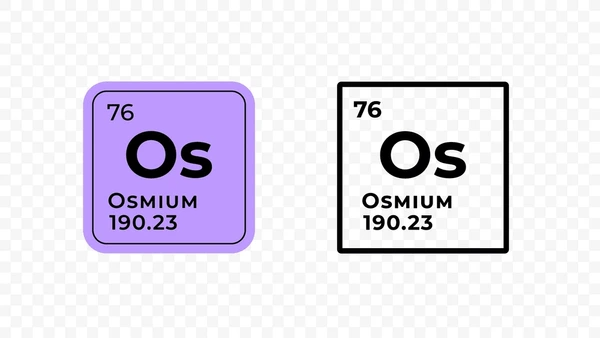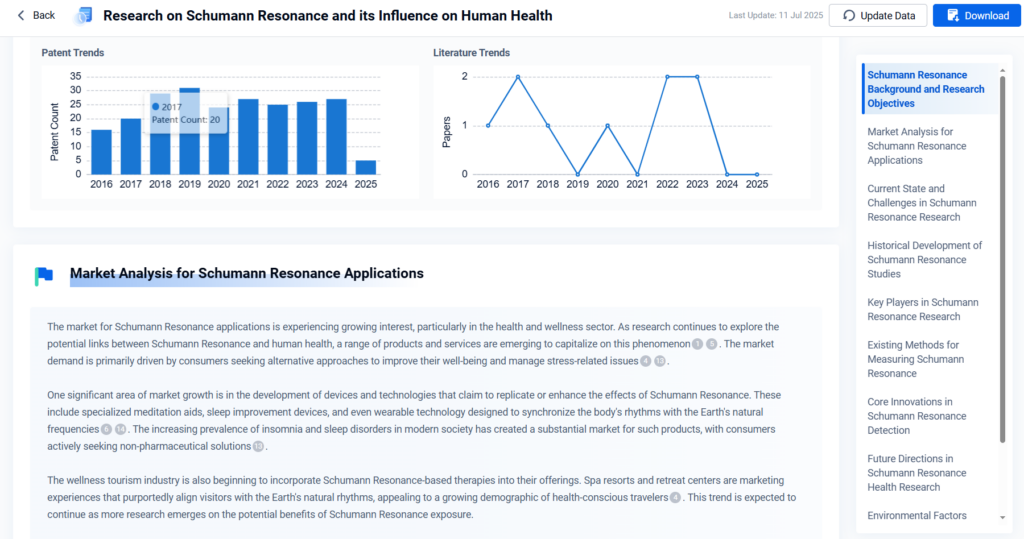
Osmium is a rare, dense transition metal known for its bluish-white color and unmatched hardness. As the densest naturally occurring element, it offers remarkable resistance to wear and corrosion. This blog explores its composition, grades, real-world applications, innovations, and sustainability, highlighting how the PatSnap Eureka AI Agent helps companies monitor technical trends and patent activities.
What is Osmium?
Osmium (Os) is a chemical element in the platinum group metals (PGMs). It is extremely dense and hard, with a high melting point and excellent resistance to corrosion and compression. In its powdered form, it can oxidize to form toxic osmium tetroxide (OsO4), making handling protocols essential.

Composition & Properties / Performance
Chemical Identifiers
- Molecular Formula: Os
- CAS Number: 7440-04-2
- Atomic Number: 76
- Purity Grades: 99.95%+ for industrial uses
Physical & Mechanical Properties
- Density: 22.59 g/cm³ (highest of all elements)
- Melting Point: 3033°C
- Boiling Point: 5012°C
- Hardness: 7 (Mohs scale)
- Electrical Resistivity: 8.13 Ω·cm (20°C)
- Color: Bluish-silver
Functional Characteristics
- High wear resistance
- Stable at high temperatures
- Corrosion resistant in acidic environments
- Low compressibility
Material Grades & Designations
Standard Grades
- Os-99.95 (Refined Grade): Used in electronics and alloys
- Osmium Sponge: Intermediate form used for purification or alloying
Industry Classifications
- ISO and ASTM do not standardize osmium as strictly as steel or aluminum
- Material data usually provided by refiners (e.g., Heraeus, Johnson Matthey)
Application Landscape
Key Industries
- Jewelry & Luxury Goods: Crystalline osmium is used in watches, pens, and premium accessories.
- Electronics: Thin films and electrical contacts benefit from osmium’s conductivity, hardness, and resistance to corrosion.
- Medical Field: OsO4 plays a role in tissue staining and biological imaging techniques like electron microscopy.
- Aerospace & Defense: High-performance alloys including osmium enhance the lifespan of turbine blades, space optics, and ballistic systems.
- Analytical Instruments: Utilized in mass spectrometer ion sources and high-precision pivots and bearings.
Usage Scenarios
- Montblanc and Hublot have integrated crystalline osmium into limited-edition accessories.
- Os-Iridium alloys serve as electrode materials in space missions and harsh environment sensors.
- Os coatings are being explored in next-gen IC chip contacts to prevent electromigration.
Emerging Trends
- Development of osmium-based piezoelectric devices for vibration energy harvesting.
- Use in high-precision gyroscopic components for satellites and submarines.
- Incorporation into high-longevity medical implants for cardiovascular stents and pacemaker housings.
Osmium vs Other Similar Materials
| Property | Osmium | Platinum | Iridium |
|---|---|---|---|
| Density (g/cm³) | 22.59 | 21.45 | 22.56 |
| Melting Point (°C) | 3033 | 1768 | 2446 |
| Corrosion Resistance | Very High | High | Very High |
| Cost per Gram (USD) | ~$400 | ~$30 | ~$140 |
| Toxicity | Potential (as OsO4) | Low | Moderate (in salts) |
Advantages
- Exceptional density and durability
- Unique visual brilliance (crystalline form)
- Stable under extreme environmental conditions
- Highly corrosion resistant
- Valuable in minute amounts due to rarity
Innovations & Technology
- Crystalline Growth: Recent patents have introduced low-temperature vapor phase deposition techniques for producing large-area crystalline osmium with improved structural integrity and reduced defects. These innovations have unlocked new commercial applications in watch dials and hybrid display technologies.
- Spintronic Applications: Os-based compounds are being integrated into magnetic tunnel junctions for MRAM (Magnetoresistive Random-Access Memory) devices. Their high spin-orbit coupling and stability under extreme magnetic fields make them attractive for durable non-volatile memory.
- Green Hydrogen Catalysis: Osmium oxide nanoparticles are now being tested in proton exchange membrane electrolyzers. These catalysts exhibit high oxygen evolution activity and durability, outperforming some conventional ruthenium-based materials.
- Nano-coating Technologies: Researchers have developed atomic-layer deposition (ALD) methods using osmium precursors for ultrathin coatings on semiconductor wafers and biomedical sensors.
- Optical Sensing: Thin films of osmium-based oxides are under investigation for use in infrared and UV sensor applications due to their unique refractive index profiles.
Sustainability & Environmental Impact
- Scarcity: It is the rarest stable element in Earth’s crust
- Toxic Byproducts: OsO4 is highly toxic and must be handled in sealed systems
- Recyclability: Osmium from electronics and catalysts is reclaimable
- Regulations: Transport and use restricted under EU and US guidelines
PatSnap Eureka AI Agent Capabilities
PatSnap Eureka AI Agent enables:
- Maps global Os patent activity and tech clusters
- Identifies leaders in Os-alloy innovation and luxury applications
- Finds white space opportunities in sensors and catalysis
- Tracks competitor filings in defense and biomedical applications
Conclusion
Osmium’s unmatched density and hardness make it a critical material in advanced applications, from fine jewelry to aerospace sensors. Despite its toxicity in some forms, innovations in crystalline and coated formats expand its usability. For teams exploring materials innovation, the PatSnap Eureka AI Agent offers powerful insights into patent trends, emerging players, and untapped markets.
FAQs
In solid form, it’s safe. However, when oxidized to osmium tetroxide (OsO4), it becomes highly toxic and volatile.
Crystalline osmium is rare, visually striking, and extremely durable, making it ideal for luxury pieces.
It is one of the most expensive metals, often exceeding $400 per gram due to its rarity.
Yes, especially in electronic and catalytic applications where recovery is feasible.
It is the densest element known, offering unmatched hardness, corrosion resistance, and prestige value.
Ready to Explore Deeper with Schumann Resonance Insights?
PatSnap Eureka AI Agent empowers researchers and innovators to decode patent landscapes, map electromagnetic innovation trends, and identify cross-disciplinary opportunities—whether you’re advancing space weather systems, environmental sensing, or next-gen communication technologies.
👉 Book a PatSnap Eureka AI Agent demo today and amplify your research with AI-powered intelligence.




